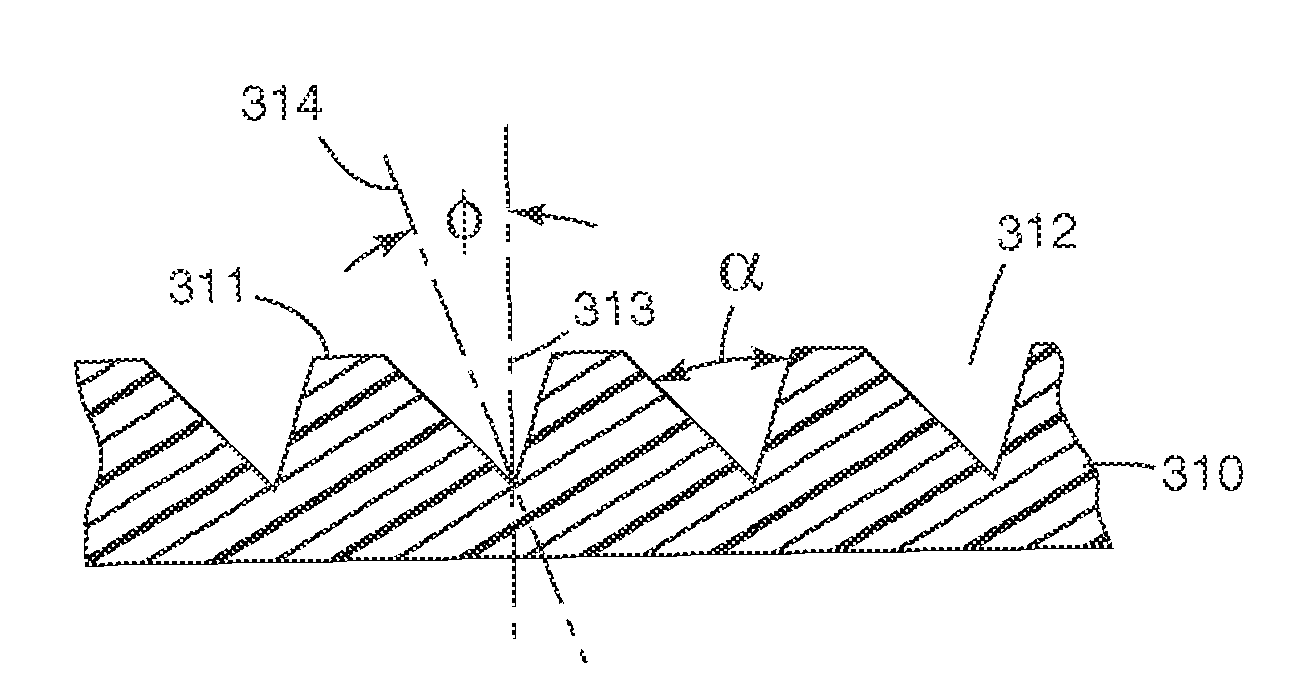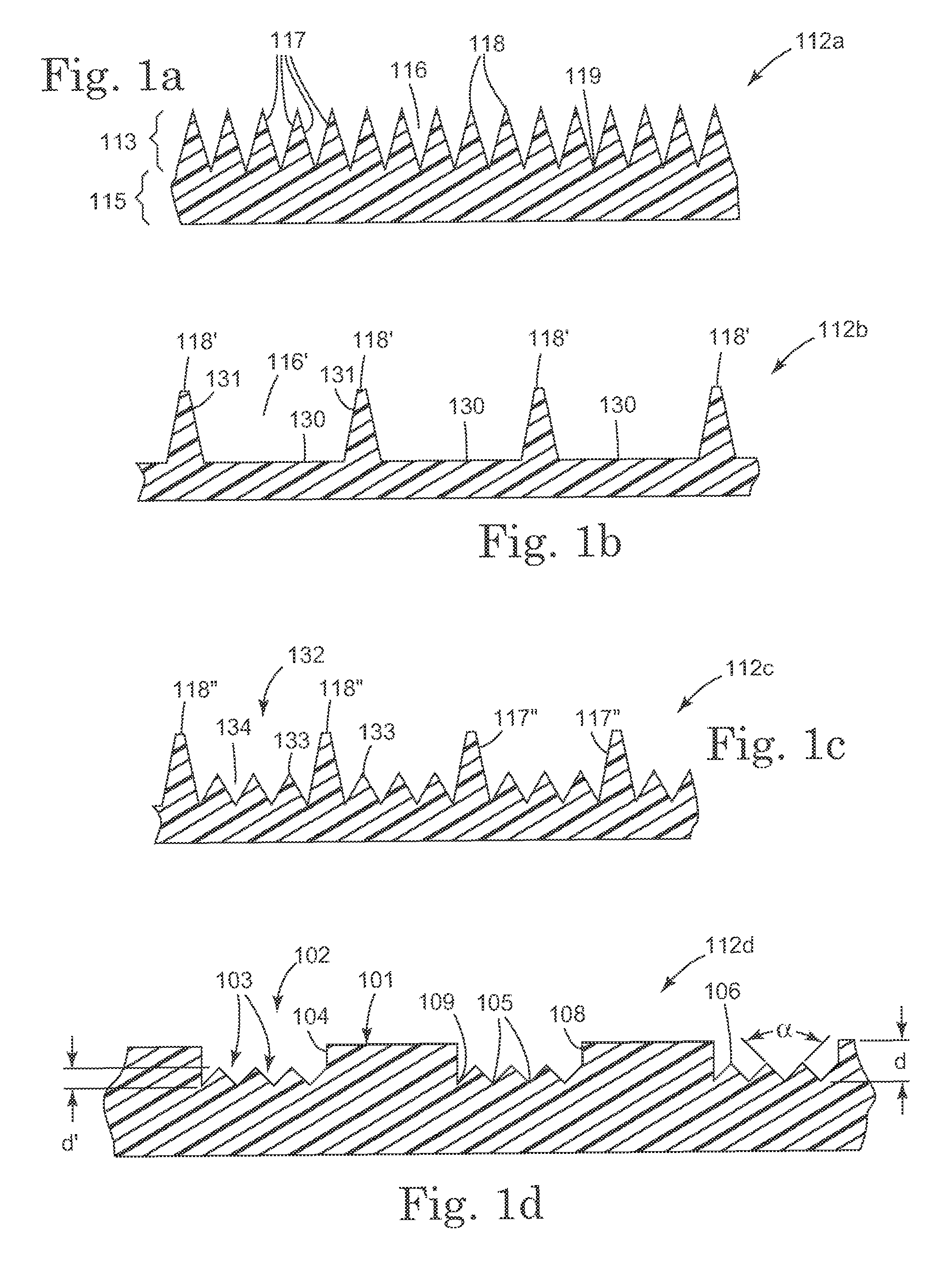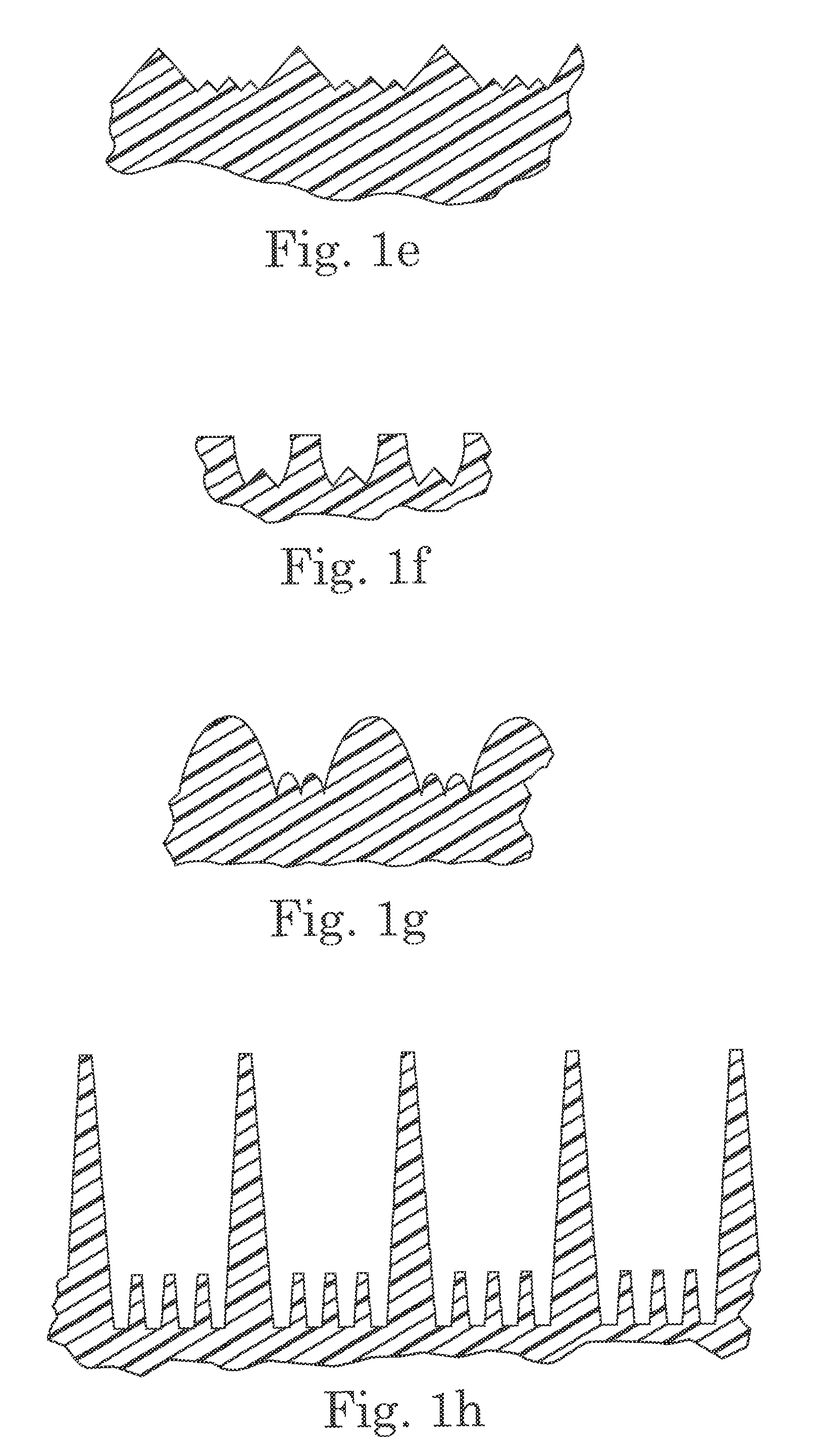Detection article having fluid control film
a technology of fluid control film and detection article, which is applied in the field of detection articles, can solve the problems of high manufacturing cost and difficult field testing, and achieve the effect of convenient detection and efficient and rapid handling of fluid samples
- Summary
- Abstract
- Description
- Claims
- Application Information
AI Technical Summary
Benefits of technology
Problems solved by technology
Method used
Image
Examples
example 1
Bacterial Identification
Run 1a: Preparation of Embossed Films.
[0169]Films containing parallel channels were extrusion embossed onto a foam backing as described in U.S. patent application Ser. No. 08 / 905,481. The cross-section of each channel was in the shape of an inverted trapezoid having a base of approximately 0.75 mm and a height of approximately 1.0 mm. The sidewall angle was approximately 15 degrees. Each channel was separated by a “land area” of approximately 0.75 mm. The channels were sealed with a top film (ScotchPak #6, 3M Company) using a roll-to-roll laminator station heated to 149 degrees C. (300 degrees F.).
Run 1b: Substrate Profile Determination.
[0170]A commercial ID kit (BBL Enterotube II, Becton Dickenson Co.) containing the 12 tests outlined in Table 1 was used for comparison to the microchannel device. The hydrogel from each compartment of the ID kit was removed with a spatula and placed in a test tube. The hydrogel was melted by placing the tubes in a heated bloc...
example 2
Minimum Inhibitory Concentration (MIC) Test
Run 2a: Preparation of Microchannel Films.
[0174]Microchannel polyethylene films were heat embossed on a hydraulic press according to the procedure outlined in U.S. patent application Ser. No. 08 / 905,481. The channels used for this experiment had a rectangular cross-section of approximately 0.087 mm (0.022 inches) deep by approximately 1.96 mm (0.077 inches) wide. The channels were covered with ScotchPak #33 (3M Company) using an iron heated to 149 degrees C. (300 degrees F.), forming a series of capillary channels.
Run 2b: MIC Test Using Microchannels.
[0175]A dilution series of tetracycline was prepared in VRB media (7.0 g Bacto peptone, 3.0 g yeast extract, 1.5 g bile salts per liter) containing the fluorescent indicator methylumbelliferyl glucuronide (MUG, 0.5 mg / ml). The following tetracycline concentrations were prepared: 40, 4, 0.4, 0.04, and 0.004 micrograms / ml. Approximately 1 ml of each solution was placed in a test tube. A suspensio...
example 3
Gel Arrays Formed from Sheets of Microchannel Film
Run 3a: Preparation of Microchannel Film
[0176]Microchannel film was extrusion embossed according to the procedure of Johnston (U.S. Pat. No. 5,514,120). For the examples cited below two embossing tools were used. Tool 1 produced microchannel film with a “V channel” cross-sectional profile. The microchannels had a triangular cross-section with a base of approximately 0.3 mm and a height of approximately 0.35 mm. Tool 2 produced microchannels with a square cross-section approximately 0.2 mm by 0.2 mm. In addition, the microchannels from tool 2 produced a set of 4 smaller “nested” channels (˜50×50 microns) at the base of each microchannel.
Run 3b: Preparation of Cubic Array Containing Isolated, Open-Ended Gel Zones
[0177]This run serves to demonstrate a “blank” array containing isolated, open-ended gels where each gel element is the same. To build an oligonucleotide array from such a device would require the use of a reactive gel and opti...
PUM
 Login to View More
Login to View More Abstract
Description
Claims
Application Information
 Login to View More
Login to View More - R&D
- Intellectual Property
- Life Sciences
- Materials
- Tech Scout
- Unparalleled Data Quality
- Higher Quality Content
- 60% Fewer Hallucinations
Browse by: Latest US Patents, China's latest patents, Technical Efficacy Thesaurus, Application Domain, Technology Topic, Popular Technical Reports.
© 2025 PatSnap. All rights reserved.Legal|Privacy policy|Modern Slavery Act Transparency Statement|Sitemap|About US| Contact US: help@patsnap.com



